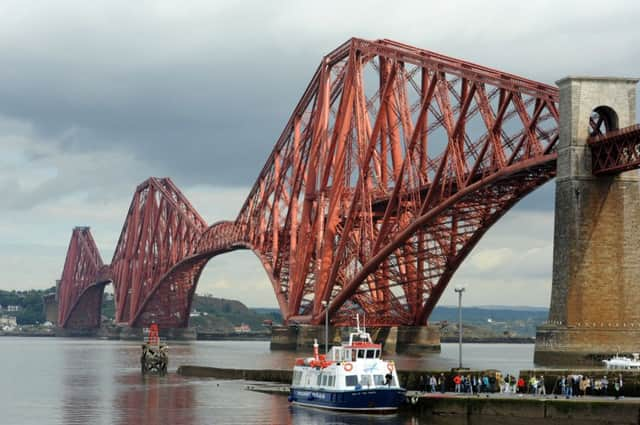Why ferries are underused in Scottish transport


Scotland is a seagoing nation. With over half a million miles of coastline, replete with firths, sea lochs and rivers, we are well placed to use the sea as a key element in any sustainable transportation system.
South-east Scotland stands astride the Firth of Forth; one of Scotland’s major seaways. The firth is home to Scotland’s only direct roll on-roll off freight ferry service to mainland Europe and to a number of smaller ports. Yet this resource, which could be a bustling highway of the sea, is sadly underused whether for business or pleasure. Its smaller ports stand idle or receive a handful of vessels each day. Yet these are the gateways to some of most beautiful and historic areas in south-east Scotland and could thrive if tourist ferry services were established, allowing visitors easy access to the hinterland, without the need to drive long distances.
Advertisement
Hide AdAdvertisement
Hide AdIn 2007, SEStran, in partnership with Stagecoach, carried out a trial hovercraft ferry service from Kirkcaldy to Edinburgh. This proved that such a service would be viable for both commuter traffic and tourism. Further study indicated that a foot passenger service from Burntisland to Granton might also be viable.
SEStran is currently a key member of iTransfer (innovative transport solutions for fjords, estuaries and rivers), a multi-million pound EU-funded project comprised of 16 partners from the UK and continent. It aims to make ferry transport more widely accessible and sustainable and to encourage more people to travel by water whether for business or pleasure throughout the North Sea. Ferries can play a major role in reducing traffic congestion by providing an effective and environmentally friendly alternative to road transport.
On 6 November the iTransfer conference at Surgeons’ Hall in Edinburgh will welcome ferry industry experts, policy makers, academics and delegates representing the 16 partners from the UK, Belgium, Germany and the Netherlands to explore the future of sustainable ferry design and operations.
The event will focus on enhancing the efficiency of ferry operations through harnessing new technologies to reduce fuel consumption and emissions; exploring alternative fuel options; encouraging a more supportive policy framework for public transport; and developing innovative new sustainable ferry designs.
Minster for transport Keith Brown will make a keynote speech, outlining the importance of ferry services to the government’s vision of the contribution they can make to the social, cultural and economic wellbeing of Scotland.
As part of our contribution to iTransfer, SEStran has developed a toolkit to help partners combat rising levels of traffic congestion and pollution by moving passengers from road to water. We are also working with East Lothian Council to renovate North Berwick’s Galloway Pier to make it more accessible and more suitable for low-tide landings.
The project was made possible with EU financial backing through iTransfer, which provided £130,000 of the £488,288 cost for the improvements split between East Lothian Council and the SEStran as a member of the iTransfer partnership.
Galloway’s Pier is being reconfigured, enlarged and raised in height by one metre, improving access by reducing the gradient of the pier from the back of the adjacent harbour. Raising the surface level of the pier will allow it to be used over a longer period during low tide, when access to the harbour is prohibited by low water. The access path to the pier is being widened and a safety handrail will be installed.
Advertisement
Hide AdAdvertisement
Hide AdWith these improvements the pier will offer safe berthing for vessels with shelter from the prevailing swell on the west side of the pier and increased accessibility to vessels offering tourist ferry services in the Firth of Forth. It is an example of the kind of improvements that are vital to ensure port facilities can be used to the maximum.
Improved facilities also require improved vessels, and SEStran is working with Maid of the Forth, a private tourist ferry company, to establish services from North Berwick Harbour to the Bass Rock, Anstruther and the Isle of May. We are trialling fuel-flow meters and biodiesel fuel mixtures to establish the most fuel-efficient and environmentally friendly way of establishing such a service.
Our aim is to ensure that the new service will be an example of how tourist ferry services can provide convenient, affordable access to attractions the length and breadth of the Forth, in a way that widens transport options while cutting emissions.
These innovations make existing facilities more viable by improving their suitability for increased traffic, while also improving the type and range of vessels plying the Forth. Gradually we will seek to optimise the potential of the Forth as a principal highway, at the heart of south-east Scotland.
• Councillor Russell Imrie is chairman of SEStran.
SEE ALSO
CONNECT WITH THE SCOTSMAN
• Subscribe to our daily newsletter (requires registration) and get the latest news, sport and business headlines delivered to your inbox every morning